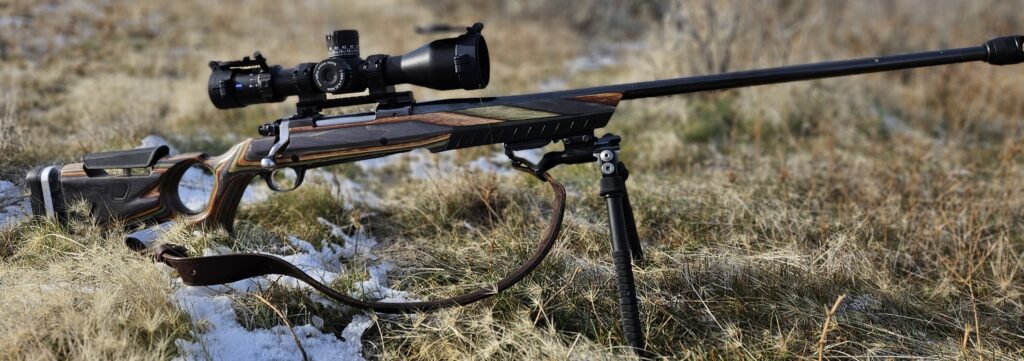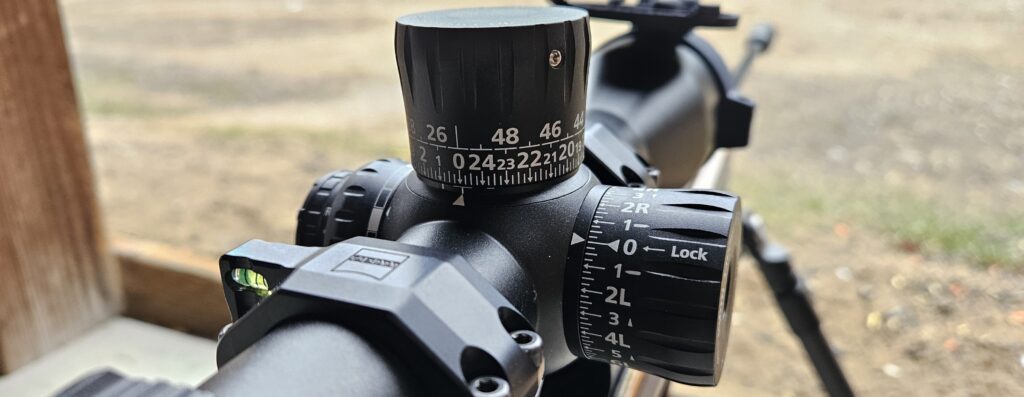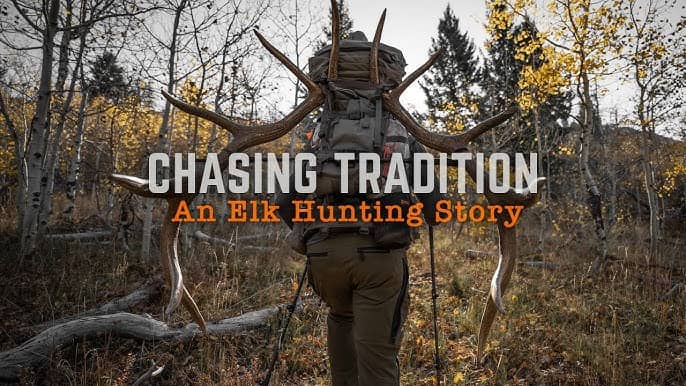160 MOA. That’s the elevation travel you get with the Zeiss LRP S3 scope. That eye-popping amount of elevation travel begs the question: what can’t this Zeiss rifle scope do? With that kind of internal adjustment, it’s clearly designed as a long range scope. And while the Zeiss LRP S3 riflescope certainly performs incredibly well on the range and at the match, I also asked the question: does it belong in the field as a long range hunting scope?
Over the years here at Backwoods Pursuit, we’ve had the pleasure of testing a wide range of Zeiss optics (as well as many other brands), and we were big fans of the second focal plane Zeiss Conquest V4—especially if you prefer second focal plane scopes. That being said, excelling at building both first and second focal plane scopes can prove to be challenging. The Zeiss LRP series of scopes is Zeiss’ first venture into first focal plane (FFP) scopes, and after over a year of use and testing, I can attest to the fact that they hit a home run with this LRP S3.
Some of my biggest questions with the Zeiss LRP S3 were: “Will the reticle be functional?” “How good will the optics be?” “Is this a viable long range hunting scope, or will it need to be designated for competitive shooting only?” “How crisp and tactile will the turrets be?”
Deciding on a Scope – Narrowing it Down
There are a myriad of factors to consider when selecting the best rifle scope for hunting and matching it to your needs in the field. A couple of key considerations will help you quickly narrow down the search. Among the most critical factors are:
- Price range
- First or second focal plane
- Magnification range
- Turret style
- Reticle style
- Objective size
- Overall weight
- Main tube size
If you systematically go through each of these possible features, you’ll quickly narrow down your search to something much more manageable.
What’s the Difference Between FFP and SFP Scopes?
Much has been written about this subject, so we won’t reinvent the wheel here, but a quick and easy way to remember the difference between them is simply that with First Focal Plane (FFP) scopes, the reticle grows and shrinks in size along with the magnification. At minimum magnification, the reticle will appear much smaller (sometimes too small to see it very well) than at maximum magnification. Conversely, in some FFP scopes, the reticle gets too big at maximum magnification, which can make picking a small target more difficult at long ranges.
First Focal Plane – Subtensions
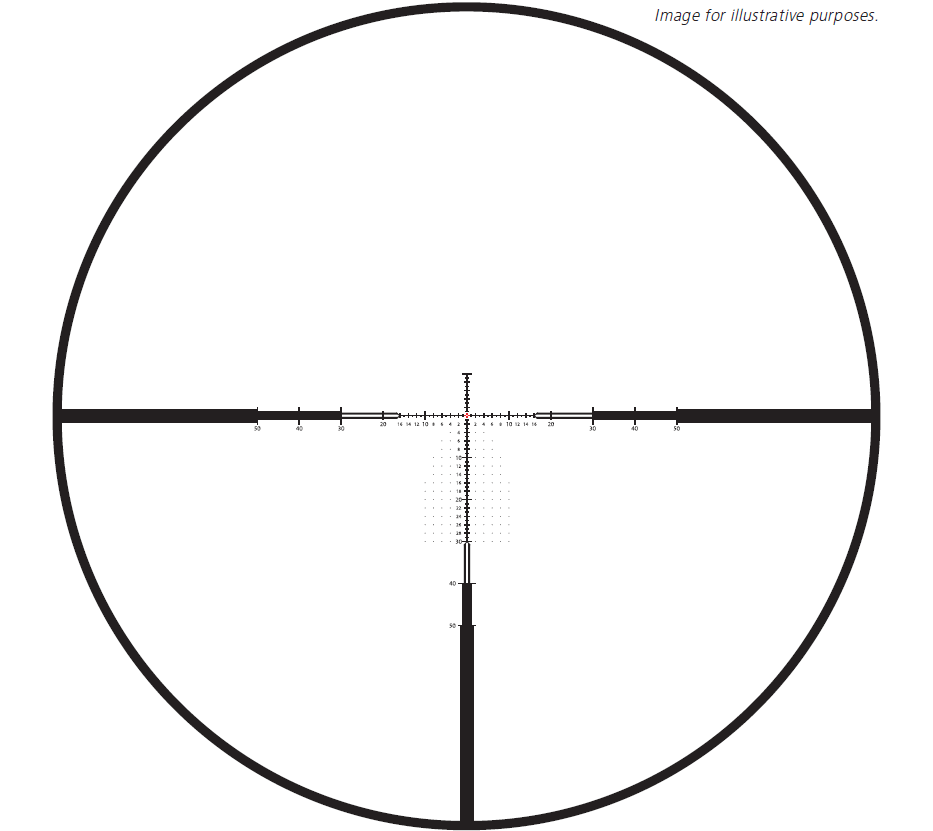
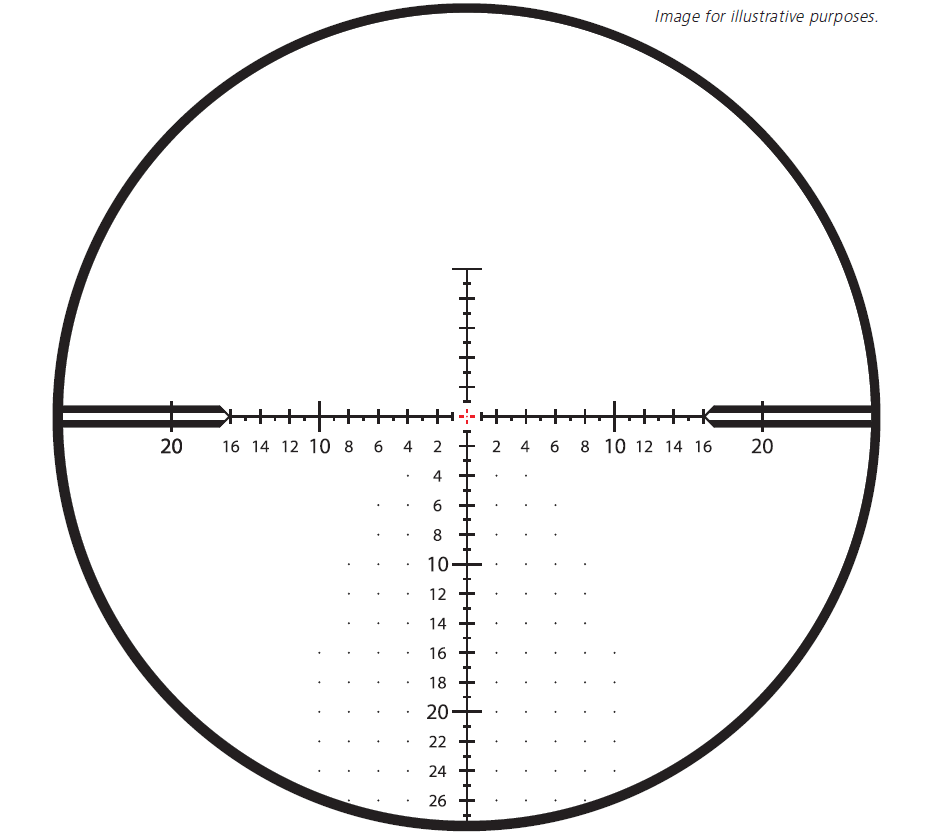
Some folks really dislike this aspect of FFP scopes—and it’s a very valid argument. That said, the benefit (and it’s a big one) of First Focal Plane scopes is that they keep the reticle subtensions (hash marks, dots, or whatever that particular reticle uses) at a consistent and known value throughout the entire magnification range. This makes your wind and elevation holds so much easier and ALWAYS precise – at any magnification setting.
While I don’t love how the reticle can get too small or too large on some FFP scopes, there are certainly some FFP scopes out there that find a very usable balance, and the Zeiss LRP S3 is one of my personal favorites. Reticle selection all comes down to use and personal preference, so the next guy might not care for the reticle offerings of the LRP S3.
Second Focal Plane – Subtensions
Alternatively with Second Focal Plane (SFP) scopes, the reticle stays and looks the same throughout the magnification range; however, the subtension values change depending on what magnification the scope is. A consistent reticle size can be a benefit to the hunter as you will never pull up your rifle for a shot and find the reticle either too large or too small. I actually prefer the sight picture of a SFP scope for hunting situations. However, at the same time, the downfall to SFP scopes is that the subtensions are typically only accurate at maximum magnifications.
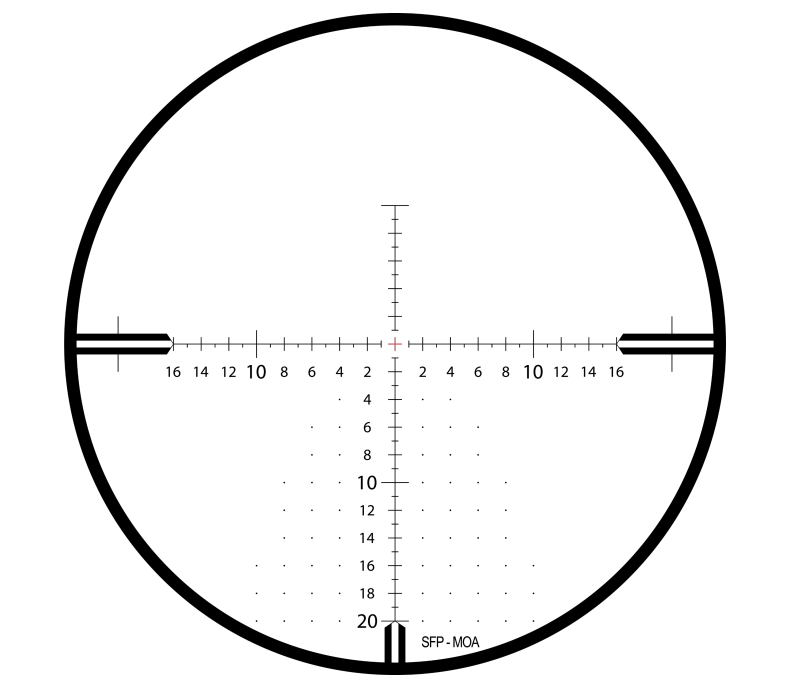
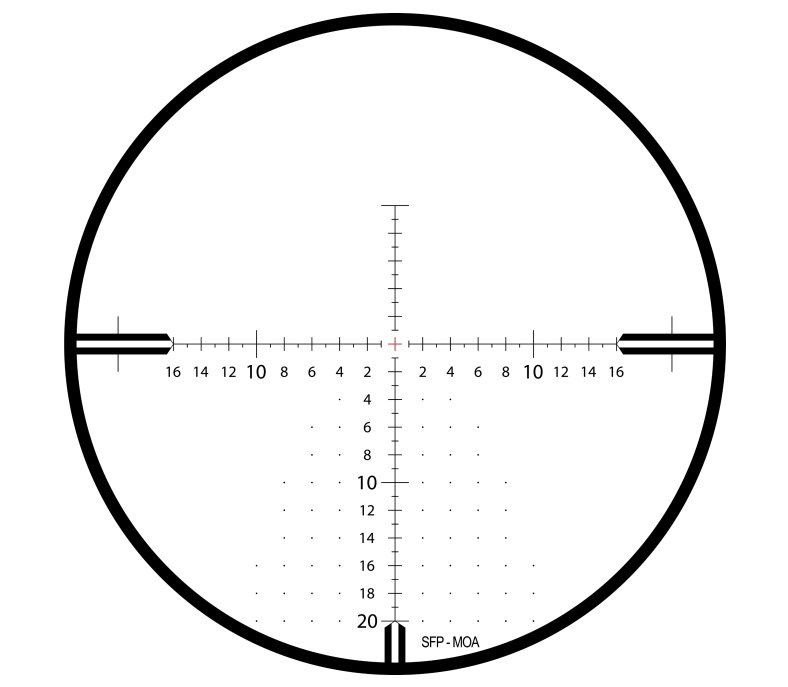
This can be extremely problematic if you don’t want or need to be at the scope’s maximum magnification for those very common shots between 200 yards and 500 yards, but do need to adjust for wind. This range can easily be shot without zipping your scope up to its maximum magnification (particularly if the scope has a maximum magnification of 20-30x). You may be forced to perform extra math in your head on the fly in a pressure situation, and if not very well versed in that equation, this could cost you your shot opportunity, or worse, cause a bad hit on an animal.
At the end of the day, I still go back and forth between the two, but I definitely lean towards FFP myself as the value of the subtensions being a fixed value is more important to me than the reticle staying the same size and wondering if I’m on the right magnification to trust my subtensions.
Zeiss LRP S3 Review – Specs
If specs are your thing, the Zeiss LRP S3 has some mind-bending numbers that’ll allow you to shoot as far as your heart desires. With a wide magnification range, expansive elevation and windage travel, and a moderate size and weight, the Zeiss LRP S3 specs will catch your eye.
| Zeiss LRP S3 4-25x50mm | |
|---|---|
| Weight | 36.7 oz |
| Length | 13.4 in |
| Objective | 50 mm |
| Zoom | 4x-25x |
| Eye Relief | @4x: 3.5 in @25x: 3.0 in |
| FOV @ 100yds | @4x: 28.5 ft @25x: 4.8 ft |
| Parallax Adjustment | 16.4 yds to Infinity |
| Tube Diameter | 34 mm |
| Focal Plane | First |
| Elevation Turret | Exposed, Non-Locking |
| Windage Turret | Exposed, Locking |
| Elevation Adjustment | 160 MOA / 46.54 MRAD |
| Windage Adjustment | 60 MOA / 17.45 MRAD |
| Turret Travel Per Rotation | 25 MOA / 10 MIL |
| Illuminated Reticle | Yes – Multi-Stage |
| Waterproof | Yes |
| Zero Stop | Yes |
Looking for a pair of binoculars? Check out our MASSIVE 26 BINOCULAR REVIEW where we put 26 of the best binoculars side by side!
While the specs the Zeiss LRP S3 offers clearly put it in the category of a competition style scope, one of my questions with this model was how it would serve as a long range hunting scope. Sure, it won’t win any weight savings awards – so for those putting together a lightweight build, this is probably not your scope. However, if you’re someone who doesn’t mind a few extra ounces on your optic, and will actually use what this scope offers, this is absolutely worth a look.
Zeiss LRP S3 Review – The Glass
Featuring Zeiss’ premium Extra-Low Dispersion (ED) glass and their T* multicoated lenses, I can personally attest to the fact that this glass performs well beyond this scope’s price point. The impressive magnification range of 4–25x allows for use on close targets as well as shots well beyond what most of us will ever take. Image resolution is phenomenal, and when putting the Zeiss LRP S3 next to my similarly configured, but more expensive Leupold Mark 5HD, I was actually surprised to find that I preferred the LRP S3 glass.
Now, when it comes to rifle scopes, having amazing optics isn’t the most important factor—but it sure is nice when a scope gives you a crisp, clear image for those precise shots.
Zeiss LRP S3 Scope Review – Best Uses
The Zeiss LRP S3 rifle scope was built with the primary purpose of being a long-range hunting riflescope. That being said, it also serves exceptionally well as as a match style competitive shooting riflescope. The main “compromise” if you will, being if you’re willing to carry the extra weight in a scope while hunting. If you’re building an ultralight rifle, this won’t be the scope you’ll want to mount on that build. However, if weight savings isn’t at the top of your list, the Zeiss LRP S3 is a fantastic scope for both competitive shooting and long range hunting applications, with its integrated zero stop on the elevation turret and external, locking windage turret.
The LRP S3 isn’t a scope I’d recommend of general hunting purposes, as it simply offers far to many features for those not truly needing the ability to stretch out the distance in the field. But those who spend the time to become proficient at longer ranges and have the ability to consider those shots will welcome the features in exchange for the extra weight.
THE ZEISS LRP S3 WAS BUILT TO EXCEL AT:
- Long-range hunting
- Low-light performance
- Competitive shooting
- Rugged, waterproof construction
- Reticle options designed for both competitive shooting and long-range hunting scenarios
Zeiss LRP S3 Review – Reticle Design
Reticles are a touchy subject—and almost entirely a matter of personal preference based on one’s use case. What I like may send you on a rant about its inadequacies, or vice versa. That being said, for me personally—as primarily a hunter rather than a competitive shooter—I’m looking for a more simplistic reticle design that allows me to quickly hold for a wind call and make on-the-fly adjustments as an animal moves across a hillside.
For what I need, I absolutely love the ZF-MOAi, Reticle 17. While it may leave you wanting a bit for competitive shooting, it has everything I look for in a hunting reticle. And since I’m personally an MOA fan, this worked out perfectly. The floating center dot is excellent—and a feature I look for in any reticle. If you prefer MRAD and want or need more detail in your reticle, you may prefer the ZF-MRi, Reticle 16, as there’s a lot more going on with that design.
I do wish that Zeiss would offer more than just one reticle in each configuration. If I was an MRAD fan, but wanted the style offered in the ZF-MOAi reticle, I’d just be out of luck.

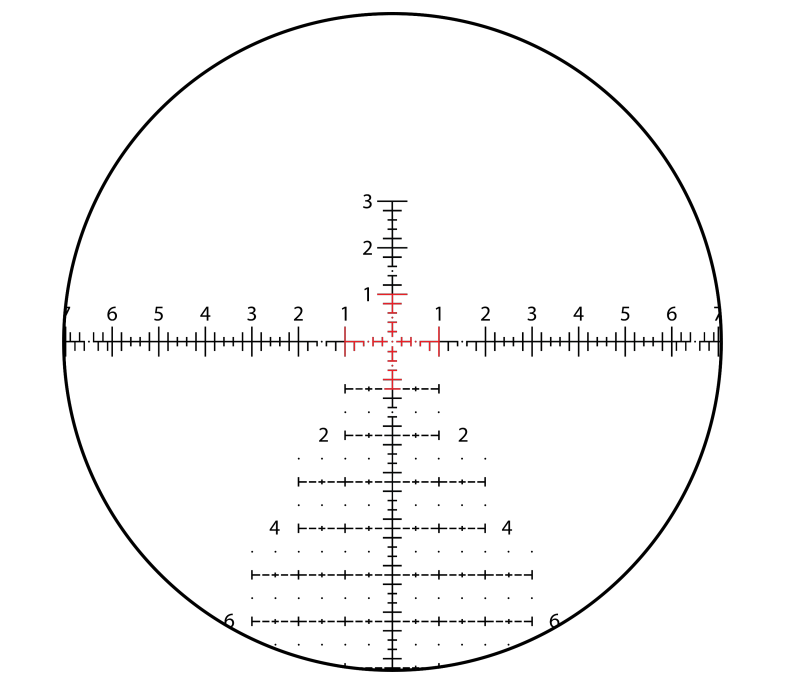
Make sure to check out our other gear reviews and the Backwoods Pursuit YouTube Channel to help you decide what gear will help you stay out in the field longer!
I’m a huge fan of the floating center dot that these reticles offer, and especially like how just the center portion is illuminated. Again, it’s a personal preference, but I’m a fan.
Zeiss LRP S3 Review – Turrets / parallax / Illumination / Zero Stop
There are no two ways around it. The Zeiss LRP S3 turrets are large. If you’re looking to take the LRP S3 hunting, they are certainly on the large side and can seem a bit overkill, however, the larger turrets and markings make it exceptionally easy to read, even in low light. I also like that the windage turret locks, and the clicks are crisp and tactile.
Large turrets may be a deal breaker for some, but as you can see above, you get a whopping 25 MOA per revolution, and the even numbers are large and easily readable to assist with quick adjustments.
Zeiss LRP S3 Turret Features:
- Large and easy-to-read markings
- Zero stop
- Exposed, non-locking elevation turret
- Exposed, locking windage turret
- Super-smooth parallax adjustment
- Illuminated reticle
- 25 MOA per revolution
Zeiss LRP S3 Review – Image Quality
While image quality isn’t the most important factor in a scope (in my humble opinion), it sure is nice when a scope delivers a crisp, clean image, particularly on longer shots or in low light situations. This is exactly where the Zeiss LRP S3 excels. In fact, when testing side by side with the much more expensive Leupold Mark V HD in the same configuration (which is also a fantastic scope), I observed the LRP S3 to provide a slightly better image. That’s impressive given the price point and extra elevation travel the LRP S3 offers.
IMAGE RESOLUTION BETTER THAN:
IMAGE RESOLUTION NOT AS GOOD AS:
Zeiss LRP S3 Scope Review – Durability
The Zeiss LRP S3 passed all durability testing that we put it through during normal use at the range and in the field on hunting trips. It bounced around in the truck, was strapped on the 4 wheeler for long trail rides, and was mounted on a heavier recoiling 7mm Rem Mag for the better part of 2 years. We didn’t perform the infamous Rokslide “drop test,” though.
Zeiss LRP S3 Review – Tracking
To test the tracking on the Zeiss LRP S3, we first performed a box test, working our way from the center of a target, then moving 5 MOA in each direction and taking another shot. Each time we returned the scope to zero, and moved to the next side of the “box”. The scope performed well within the 0.75 MOA limitations of this specific gun and load. For this test it tracked true and was spot on.
Next, we did a tall target test, setting up a large sheet of paper and a specified aiming point at the bottom of the sheet. A bullseye was shot at the starting point to verify, and I worked my way up a vertical line (verified with a plum line) shooting every 10 MOA. The scope tracked true throughout the range with a nominal correction factor of .9974. Or, in other words, there was likely more shooter error than scope error.
One of the biggest selling points was how consistently the Zeiss LRP S3 returned to zero. I can say after testing over two dozen quality riflescopes, this is not always the case, even with expensive scopes. Time after time, range trip after range trip, the LRP S3 never once failed to return to zero. This kind of performance inherently builds confidence, which means more impacts and more shots on target.
Zeiss LRP S3 Review – What I Liked

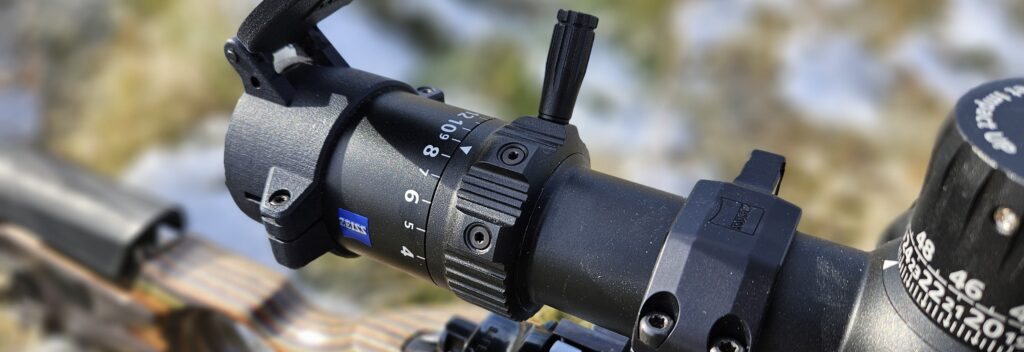
- Huge magnification range
- Crisp, clean turret movement
- Locking windage turret
- Held zero and tracked true over a two-year testing period
- Incredible optical performance
- Massive 160 MOA of internal elevation adjustment
- Compact form factor
- Illuminated center reticle
- Adjustable, multi-position throw lever
If an extreme long-range scope is what you’re looking for—one that can also be used as a hunting scope—this is absolutely at the top of my list. Sure, it’s heavy, and the turrets are on the large side for a hunting riflescope, but if you’re okay with those things, this is a great crossover scope with an insanely wide range of use.
Zeiss LRP S3 Scope Review – What I Disliked
The limited number of dislikes on the Zeiss LRP S3 primarily stem from my constant desire to shave weight wherever I can while out hunting. As mentioned previously, this scope can absolutely be used as a hunting optic, but its design leans heavily toward a long range hunting scope, and because of that, there are a number of features that aren’t ideal in a general hunting situation:
- Oversized, bulky turrets
- Heavy for a hunting scope
- No yardage markings on the parallax adjustment
Like all Zeiss scopes, the parallax adjustment doesn’t have any yardage reference markings, so the user doesn’t have a quick reference point when adjusting it. This is far from a deal breaker, but it’s something I’ve found myself wishing Zeiss offered on their scopes.
The reality is that these dislikes aren’t truly “fair” criticisms if I were using it primarily for its intended design purpose—but nonetheless, I feel they’re worth noting for folks who are looking at the LRP S3 to use as a general hunting scope. It offers far more elevation travel than is realistically needed in a hunting optic for most folks and is nearly a pound heavier than the Zeiss Conquest V4. That being said, it’s also a First Focal Plane (FFP) scope—and the LRP line is the only FFP scope line that Zeiss offers at the time of this writing.
Conclusion – Zeiss LRP S3 Scope Review
After using the Zeiss LRP S3 scope for nearly two years, I am far more impressed with it than I was when I started. Incredible optics, tracking that was precise and spot on, it always returned to zero, and a reticle that I personally fell in love with. The value here is second to no other scope I’ve ever tested (and we have tested well over a dozen high quality scopes over the last 6-7 years).
While I wish there were additional reticle offerings, I imagine that might be something Zeiss adds down the road. If you’re looking for a scope that’ll allow you to shoot past a mile while still delivering the performance and durability needed for both the match and the mountain, the Zeiss LRP S3 is one I’d wholeheartedly recommend.
Subscribe to Backwoods Pursuit to get Your FREE Backcountry Gear Worksheet!!!
Dial in your gear list, calculate your pack weight, and lighten up your pack with this handy tool!





